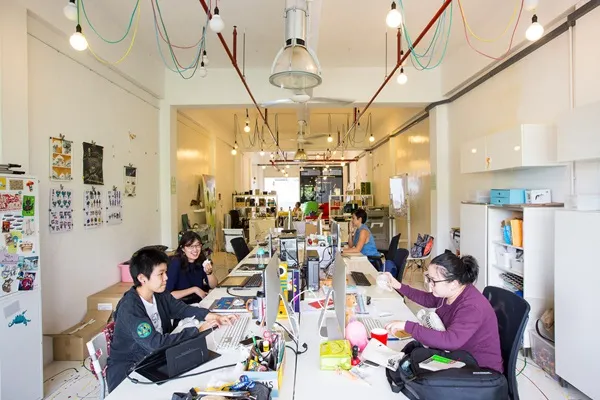新加坡不是“创业圣地
新加坡依然有商机,但冒险者也要做好夹缝中求发展的心理准备了
|1 min read

<p>如果说,以前国人喜欢去新加坡主要是为了旅游和购物,那么今年很明显变成,投资人和创业者们喜欢新加坡,是为了完成掘金新加坡、开拓海外市场的淘金梦。</p> <p>这两年,新加坡开始被中国企业视为进军东南亚、布局全球市场的重要跳板,于是,这一国土面积仅有724.4平方公里,<strong>约等于北京的海淀区和朝阳区面积之和的国际“财富圣地”,</strong>吸引了越来越多中国在内的世界各地创新领域公司、投资机构和创业者。</p> <p>尤其到了今年下半年,新加坡热更是火到新高度。头部投资人、创业者、互联网员工,都在热聊新加坡土地上发生的新事。</p> <p>越来越多富人涌入新加坡,中国大厂也在加码投入,几乎中国所有大型投资机构都在关注新加坡的机会。热钱云集,如此轰轰烈烈的热闹场面,让不少尝试<strong>开拓东南亚市场的中国出海创业者乐观判定,把新加坡作为通往这一市场的“桥头堡”,再合适不过了。</strong></p> <p><img src="“https://i.imgur.com/ONaLADG.jpg“alt=““/"></p> <p>但它已经不是波澜平静的汪洋蓝海,究竟有多少创业者,还能够从寸土寸金的新加坡市场获益,</p> <p>早在过去几年,便有不少创业者发现新加坡是一块值得挖掘的蓝海市场。</p> <p>比如网约车、外卖、电商、移动支付等互联网业务,都有机会在新加坡重做一遍,于是一批批创业者开始前赴后继前往新加坡。但<strong>从现在的市场反馈来看,实际结果却大多不如预期。</strong></p> <p>新加坡主要的电商平台Shopee,曾依靠闪电战策略在东南亚电商市场实现逆袭,疯狂扩张。如今也难逃下行周期,陷入亏损、裁员的寒冬,不得不踩下急刹车。</p> <p>从政策扶持到全球资本的密切关注,新加坡从多角度展示出自身充满活力的创投环境。但<strong>在机会与挑战并存的现实情况下,创业者们必须冷静权衡,因为在新加坡淘金,不是有勇气、敢冒险就足够,在这块面积不大的土地上,抢蛋糕也更难。</strong></p> <h3 class="“headings“">新加坡的创业公司,正经历着发展阵痛</h3> <p><strong>中国很多互联网独角兽曾经历的阵痛,新加坡的创业公司也正在经历。</strong></p> <p>熟悉中国独角兽公司或明星创业平台发展轨迹的大众都知道,这些企业中大多数者,通过疯狂烧钱、扩张,前期创下高速增长神话后,如果没能继续融资或者成为行业头部,则很快会急转直下,陷入巨额亏损、难以为继的恶性循环。如今这一发展轨迹,在新加坡的创业公司再次重现。</p> <p><strong>最引人瞩目便是被称为“东南亚小淘宝”的Shopee,近期在新加坡总部也开启了裁员步伐。</strong></p> <p>据海峡时报报道,近期创始人李小冬在Sea发布内部信称,公司领导层决定不再领取现金报酬,直到公司自己自给自足,同时将缩减公司各项开支。</p> <p>综合各类公开消息,Shopee大规模收缩是从今年6月开始的。</p> <p>一位曾面试Shopee的求职者告诉连线Insight,从今年3月,<strong>从Shopee关闭盈利情况不佳的法国站点开始,他便明显感觉HC在明显缩减,其中包括他投递的业务岗位。直至今年9月,寒气侵蚀到了新加坡大本营。</strong></p> <p><strong>成也低价、困也低价。</strong>用烧钱换流量,是国内互联网创业公司起规模的常用手段,Shopee也是如此。</p> <p>李小东对这些玩法或许颇为熟悉,他出生在天津,后来加入了新加坡国籍,在2015年推出了Shopee。</p> <p>2017年Shopee开始初探自营业务时,便推出电信卡等一系列低价产品,吸引了大量买家。之后<strong>Shopee不放过任何一个可以增加流量的机会,</strong>比如2018年签约韩国首席女子天团BLACKPINK,为“双十一”活动预热,之后又签约国际巨星罗纳尔多为其代言。</p> <p>2019年,Shopee靠着超低价,“奇袭”当时正在调整组织架构的Lazada,成为东南亚流量“四冠王”,坐上了东南亚电商平台头把交椅。</p> <p>在东南亚市场一时风头无两的Shopee,在去年全球科技公司缩衣节食的大趋势下,成为较少仍在中国乃至全球市场继续激进扩大版图的公司。</p> <p>但很快,Shopee折戟沉沙。在印度、欧洲接连失利后,市场情况近似东南亚的拉美市场,也遭遇打击。</p> <p>并且,<strong>东南亚充裕的流量优势,也并未给Shopee带来资金回报,亏损反而越演越烈。</strong></p> <p>用低价吸引消费者的引流手段,让Shopee不敢把产品价格提升上去,一旦涨价,另一头虎视眈眈的Lazada便会反扑。但若继续维持现状,则无法得到高毛利、亏损扩大。</p> <p>成也萧何,败也萧何。<strong>Shopee如今这一困境,与其成立以来一直持续的疯狂撒钱模式脱不开干系。</strong></p> <p>除了高增速不再、陷入亏损恶性循环,<strong>“ofo式”结局也成为新加坡一些创业平台难以逃脱的命数。</strong></p> <p>2017年,摩拜和ofo一边在国内打得火热,另一边将战火蔓延到了海外市场。当两者纷纷抢滩东南亚市场时,新加坡首家本土共享单车创业公司oBike,也悄然入场。一时间,在新加坡共享单车市场,形成“三足鼎立”的局面。</p> <p><strong>为了与ofo、摩拜一争高下,oBike不仅在硬件方面模仿摩拜单车,配备了相似的电子锁和GPS等追踪功能。</strong></p> <p>甚至在拉新方式上,也出奇一致。当时战端一开,oBike就复制了国内互联网公司常用但又十分奏效的补贴套路。比如,注册用户邀请朋友并完成首次骑行后,将获得3 新加坡元(约合2.1 美元)的优惠券。</p> <p>刚成立便将目标定为拓展国际共享单车市场的oBike,从2017年1月成立到8月几个月时间,便进入了澳大利亚、德国、马来西亚、荷兰、泰国和英国等9个国家。</p> <p>长期补贴烧钱、疯狂开拓市场的玩法,很快让oBike出现资金链危机。2018年,oBike在未退还用户押金的情况下,悄悄退出新加坡市场,<strong>截止到当年9月,仍欠新加坡用户650万美元的押金尚未退还。</strong></p> <p>这些故事看着熟悉,因为在中国的互联网世界上,类似的事情已经轮番上演。如果在中国这么大的土地上,依然只有极少数公司笑到最后,那么在新加坡,能够“卷”到最后的幸存者,恐怕就更少了。已经成为炮灰的创业公司们,也给冒险者敲了警钟。</p> <h3 class="“headings“">对中国创业者而言,去新加坡更多是挑战</h3> <p>究竟是什么魔力,让新加坡突然火起来了,</p> <p>过去一年,“去新加坡”是流行在中国创投圈的热议话题,隔段时间就会流传出一些创投大佬或企业家长期base新加坡的消息。<strong>今年开始,“新加坡”与“web3.0”成为频频出现在媒体报道里的热门CP组合。</strong></p> <p>宽松的金融政策环境,以及新加坡为虚拟货币交易所在内的去中心化机构提供的友好生存空间,让中国一众创业精英、投资人,把新加坡作为角逐web3.0的重要桥头堡。在中国,这一领域或多或少都有相关政策限制。</p> <p><strong>若web3.0是加速新加坡热的催化剂,富豪纷纷开家办、产业向新加坡转移以及中产移民,则是引起“新加坡热”的重要因素。</strong></p> <p>新加坡友好的税收政策,使得大量财富流入新加坡,成为富豪云集之地。</p> <p>对于来新加坡的创业者而言,新加坡是他们出海东南亚的桥头堡。</p> <p>毕竟,作为2021年人均国内生产总值高达7.28万美元,有足够强大的消费能力的国家,<strong>还没有一家公司能充分挖掘这里的互联网市场</strong>。这里的空白领域和机遇,就像几年前一片蓝海的中国移动互联网,是孕育独角兽的沃土。</p> <p>比如2015年,新加坡的移动互联网市场还是一片空白,三年后便崛起了Sea、Grab等行业领跑者。于是<strong>在这里寻找“下一个独角兽”的中国创业者,不在少数。</strong>他们相信,新加坡还会出现如国内支付宝、微信、美团一般的同类“超级应用”。</p> <p>加之,<strong>新加坡也在积极主动吸引中国公司,</strong>从为企业量身定制的创新平台,到层出不穷的创新活动,再到政策扶持,在地缘与文化方面与中国天然接近的新加坡,如此成为不少中国创业者心动的“造富梦”起点。</p> <p>但新加坡背后潜藏的风险和挑战也不容忽视。越来越多人带着淘金梦来到新加坡,可<strong>真实情况并不如想象中美好。</strong></p> <p><strong>首先是人才跟不上。</strong>开公司第一步就是招人。新加坡政府规定,海外公司在新加坡创办公司,必须有一个新加坡籍董事。但事实是,中国企业在新加坡本地招人不容易。</p> <p>新加坡人的工作习惯是,不接受加班,准点下班后工作手机关机,周末绝不加班。这对于喜欢以高速运转节奏快速开辟市场的中国公司来说,恐怕是一个不太好解决的问题。</p> <p>另外,新加坡培养的人才以金融、管理方面为主,在新加坡本地创业者中,大多是投行、咨询公司出身。<strong>在市场拓展和技术研发等业务方面,新加坡没太多匹配人才,基本只能靠中国公司从国内挖人。</strong></p> <p>但新加坡政府对外籍员工比例有严格限制,要<strong>保障本土员工优先就业,无形中提高了本土公司招聘外国人的难度。</strong></p> <p>其次,<strong>在消费习惯上,新加坡追求多元化、兼容并蓄的文化,这也造成了很难把一个产业的规模做得特别大,不太能符合一些中国创业者的预期。</strong></p> <p>新加坡向来以友好的营商环境闻名,但并不意味着在这一寸土寸金的国家,会对每位创业者、每个领域都很友好。</p> <p>实际上,在新加坡期待一个快速成长、迅速扩张的创业神话,确实不现实。新加坡很小,小到让赛道的竞争更内卷,创业者突围的难度更大, 面临的挑战也更多。</p> <h3 class="“headings“">大厂纷至沓来</h3> <p><strong>留给创业者的空间还有多少,</strong></p> <p>摸透互联网行业打法的中国巨头们,早已迫不及待来到新加坡布局。</p> <p>比较明显的一个节点是,<strong>自2020年以来,中国互联网大厂便开始重仓新加坡。</strong></p> <p>老巨头腾讯和阿里比字节跳动早成立十几年,但字节跳动借助抖音、TikTok的超强产品能力,已经开始和阿里、腾讯一较高下。三者的首次海外“见面”,就是在新加坡。</p> <p>2020年5月,<strong>阿里斥资16.8亿新加坡元(约84亿元),收购了新加坡高达50层的安生保险大厦50 %的股权,</strong>将其作为Lazada的总部。</p> <p>随后,<strong>字节跳动便将其在亚洲地区(除中国)的总部设在新加坡</strong>,并规划未来三年在新加坡斥资数十亿美元建立数据中心,用来运营TikTok和飞书。TikTok全球CEO周受资,也常驻于此。</p> <p>同年,<strong>腾讯也宣布在新加坡设立办事处,作为腾讯东南亚区域中心。</strong></p> <p>虽三大巨头在新加坡齐聚,但从市场规模看,在电商领域,只有阿里和腾讯两家打得火热,最直接表现是阿里巴巴与腾讯分别支持的Lazada和Shopee。</p> <p>2016年4月12日,阿里巴巴投资10亿美元拿下Lazada 51 %股份,从此掌握了控股权。两年后,阿里追加20亿美金投资,持股达到83 %,就此Lazada完全成为阿里平台,代替速卖通征战东南亚市场。</p> <p>而Shopee母公司Sea在创办第二年,也就是2010年,便得到了腾讯的投资,目前,腾讯持股18.7 %。</p> <p>当然,腾讯在东南亚市场除了Shopee这一队友,还直接或间接投资了Sea Group 、Gojek 、Traveloka 、Pomelo Fashion 、Tiki.vn 等。</p> <p>这些年来,<strong>腾讯和阿里在新加坡电商市场,二者可谓打得不可开交。</strong></p> <p>另一边的字节跳动,直到今年6月,<strong>才让TikTok Shop在新加坡正式上线,目前并未传出其在新加坡电商市场的明显动作。</strong></p> <p>其实除了字节、腾讯和阿里,其他行业巨头也陆续以多种形式“搬”来新加坡。比如今年2月,SHEIN将公司控制主体变更为新加坡公司,创始人徐仰天也获得新加坡永久居民身份;3月,电器品牌戴森宣布将全球总部迁往新加坡;5月,蔚来在新加坡交易所敲钟上市。</p> <p>甚至生物医药公司中国科兴,也计划投资20多亿新加坡元,在新加坡建立科研设施和国际商业总部。</p> <p>各种因素下,<strong>新加坡已经成为中国多行业龙头企业备受青睐的“宝地”。</strong></p> <p>巨头扎堆,留给中小创业者们的生存空间还会剩多少,</p> <p>正如前面提到新加坡追求多元化、兼容并蓄的文化氛围,没有哪个平台可以把一个产品规模拓展到很大,也还没有一家公司能够充分挖掘这里的市场。</p> <p><strong>外卖、电商、移动支付等互联网服务虽然早已在新加坡和东南亚其他国家落地,但中国和新加坡是完全不同的人口结构,市场发展体系都不算达到完善。</strong></p> <p>比如新加坡的人们习惯用信用卡支付,虽然不少公司提供移动支付App,但都没能改变人们的支付习惯,甚至叫网约车,也是刷卡或现金支付。</p> <p>在外卖行业,骑手骑的是自行车,配送时长难以保证。如果遇到下雨天,几乎叫不到外卖,配送费也比较高昂。</p> <p>另外,新加坡人力成本非常高,快递配送费也很贵,做不到极致效率。这些是新加坡目前尚可挖掘的现成机会。</p> <p><strong>相对于To C市场,To B类型的创业机会或许更大。因技术人才不足,新加坡企业更愿意直接对外采购服务,这便是机会。</strong></p> <p>东南亚支付独角兽OVO的企业金融部负责人陈玟佑接受GGV纪源资本采访时也袒露相同看法:“除非做To B的企业,我才会选择新加坡;To C的话,去一个国家人口比较大的市场更好。”</p> <p>不论是To C还是To B,新加坡依然有商机,但冒险者也要做好夹缝中求发展的心理准备了。</p>

